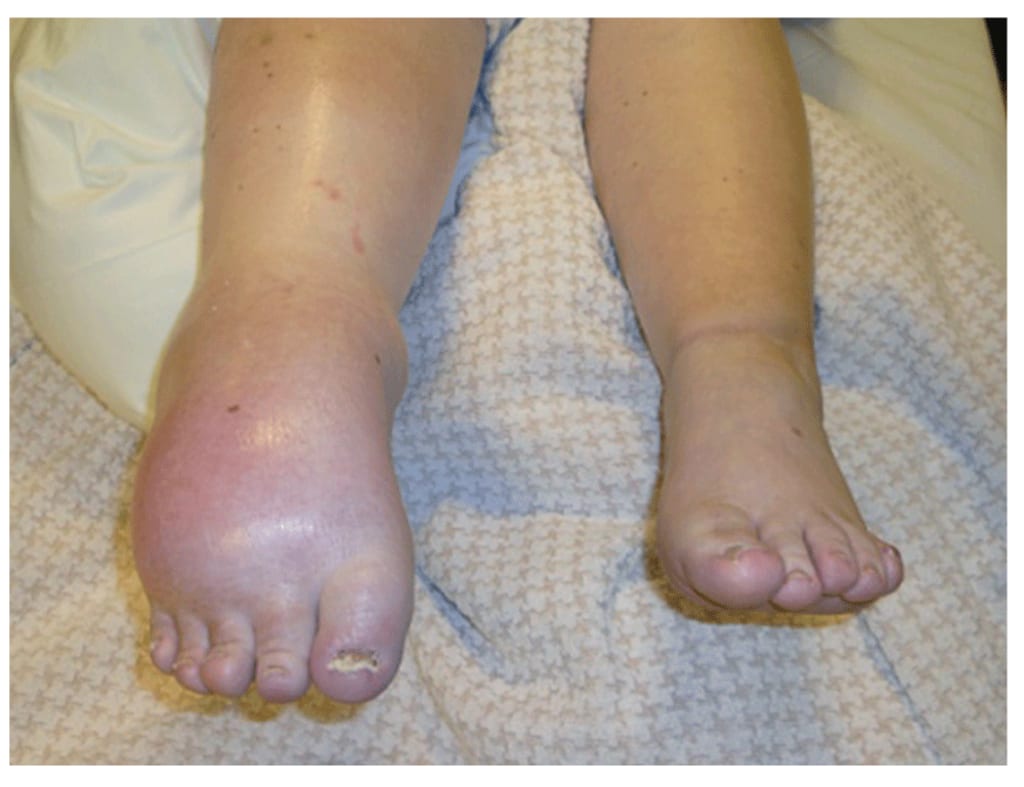Complex Regional Pain Syndrome (CRPS): Understanding and Managing a Challenging Neurological Condition
Exploring the Pathophysiology, Diagnosis, and Multidisciplinary Treatment Approaches for CRPS

Complex regional pain syndrome (CRPS) is a challenging and often misunderstood neurological condition characterized by severe and chronic pain. It typically affects one of the limbs, such as an arm, leg, hand, or foot, and can occur after an injury or trauma to the affected area. However, in some cases, there may be no apparent triggering event.
Symptoms of CRPS can be highly variable, but the most common ones include intense and continuous pain, changes in skin temperature and color, swelling, and increased sensitivity to touch or cold. Patients may also experience muscle weakness, joint stiffness, and changes in hair and nail growth patterns in the affected limb.
The exact cause of CRPS is not fully understood, but it is believed to involve a complex interaction between the central and peripheral nervous systems, as well as immune system dysfunction. This leads to abnormal inflammation and changes in the way pain signals are processed, causing the intense pain experienced by patients.
CRPS is classified into two types:
1. CRPS type 1 (CRPS-I), previously known as reflex sympathetic dystrophy (RSD), occurs without any detectable nerve injury in the affected area.
2. CRPS type 2 (CRPS-II), previously known as causalgia, occurs following a specific nerve injury.
Diagnosis of CRPS can be challenging due to the absence of definitive diagnostic tests. It is primarily based on clinical evaluation, medical history, and ruling out other possible causes of the symptoms.
Treatment for CRPS aims to alleviate pain, improve function, and enhance the patient's quality of life. A multidisciplinary approach is often employed, involving pain management specialists, physical therapists, occupational therapists, and sometimes psychologists. Treatment options may include:
1. Pain medication: Analgesics, anti-inflammatory drugs, and sometimes opioids may be prescribed to manage pain.
2. Physical therapy: Gentle and gradual exercises, as well as desensitization techniques, can help maintain or improve mobility in the affected limb.
3. Sympathetic nerve blocks: These injections can be used to block abnormal nerve signals and provide temporary pain relief.
4. Spinal cord stimulation: For severe and refractory cases, a device may be implanted to deliver electrical impulses to the spinal cord, reducing pain perception.
5. Cognitive-behavioral therapy (CBT): This therapeutic approach helps patients cope with pain and stress and may improve their overall well-being.
Early intervention and treatment are crucial in managing CRPS, as the condition can progress and become more challenging to treat if left untreated.
Complex regional pain syndrome is a complex and debilitating condition characterized by chronic pain and various physical symptoms. Proper diagnosis and a multidisciplinary treatment plan can significantly improve the quality of life for individuals living with CRPS.
The exact prevalence of CRPS is not well-established, but it is believed to be relatively rare. It can affect people of all ages, but it is more commonly reported in females and individuals in their 40s and 50s. The condition can be challenging to diagnose early on, which may lead to delays in receiving appropriate treatment.
The pathophysiology of CRPS is not fully understood, and researchers continue to study the underlying mechanisms. It is thought to involve an abnormal response of the immune system, leading to inflammation and changes in blood flow and nerve function. These alterations contribute to the characteristic symptoms of CRPS, including severe pain and alterations in skin temperature and appearance.
One of the most striking features of CRPS is the intensity of pain experienced by affected individuals. The pain is often described as burning, throbbing, or stabbing and can be disproportionate to the initial injury or trauma that triggered the condition. It may spread beyond the original site and affect a more extensive area of the limb or even the entire limb. The pain can be so severe that it significantly impairs the individual's ability to carry out daily activities, leading to functional disability.
Aside from the physical symptoms, CRPS can also have psychological and emotional impacts on patients. Living with chronic pain and disability can lead to depression, anxiety, and feelings of helplessness. Therefore, a comprehensive treatment approach that addresses both physical and psychological aspects is crucial in managing the condition effectively.
While there is no cure for CRPS, early and aggressive treatment can lead to better outcomes and potentially remission in some cases. However, the response to treatment varies from person to person, and some individuals may continue to experience chronic pain and disability despite interventions.
Research into new treatment modalities, such as nerve and drug therapies, is ongoing, providing hope for improved management of CRPS in the future. Additionally, raising awareness and understanding of the condition among healthcare professionals and the general public is essential for early recognition and timely intervention.
If you or someone you know is experiencing symptoms consistent with CRPS, it is crucial to seek medical attention promptly. An accurate diagnosis and appropriate treatment can make a significant difference in managing the condition and improving the quality of life for those affected by CRPS.
CRPS is often divided into three stages, though not all patients may progress through each stage:
1. Stage 1 (Acute):
This stage typically lasts for a few months and is characterized by severe pain, swelling, and changes in skin temperature and color. The affected limb may become hypersensitive to touch or even a gentle breeze. The pain may seem out of proportion to the initial injury, and movement of the limb can be excruciating. During this stage, early intervention with appropriate treatment offers the best chance of remission.
2. Stage 2 (Dystrophic):
If CRPS persists for several months without adequate treatment, it may progress to the dystrophic stage. The pain and swelling become more pronounced, and the skin may undergo further changes, becoming thicker and harder. Muscle wasting and joint stiffness can occur, leading to decreased range of motion and functional impairment. Without appropriate care, this stage can be difficult to reverse.
3. Stage 3 (Atrophic):
In this advanced stage, the skin becomes thinner and shiny, and there may be significant muscle atrophy and contractures. The pain may become less intense, but this is not a positive sign, as it can indicate nerve damage. Mobility and function of the affected limb may be severely limited, and the condition can lead to long-term disability.
CRPS can be triggered by various factors, including fractures, sprains, surgeries, and even minor injuries like a sprained ankle or a simple needle stick. It can also arise after conditions that affect the nerves, such as a stroke or heart attack.
Unfortunately, CRPS is a diagnosis of exclusion, meaning other potential causes of the symptoms must be ruled out before confirming the diagnosis. This process can be time-consuming, leading to delays in initiating proper treatment.
Living with CRPS can be emotionally and socially challenging. Patients may face skepticism from others, including healthcare professionals, due to the lack of visible injury or objective diagnostic tests. As a result, they might feel misunderstood, isolated, or even stigmatized, adding to the burden of coping with the condition.
Support from healthcare professionals, family, and friends is essential for individuals with CRPS. Engaging in support groups or connecting with others who have experienced similar challenges can also provide valuable emotional support and helpful coping strategies.
Complex regional pain syndrome is a complex and often poorly understood condition characterized by severe and chronic pain, typically affecting one of the limbs. Early diagnosis, a multidisciplinary treatment approach, and emotional support are crucial in managing the condition effectively and improving the quality of life for those affected by CRPS. Ongoing research and increased awareness hold promise for advancements in the understanding and treatment of this challenging condition.
CRPS is thought to result from a combination of factors, including abnormalities in the peripheral and central nervous systems. In some cases, a triggering event, such as an injury or surgery, may cause an inflammatory response that leads to an ongoing cycle of pain and dysfunction. However, the exact mechanisms underlying this condition are still not fully understood.
The diagnosis of CRPS is primarily clinical, based on the patient's history, symptoms, and physical examination. There are no specific laboratory tests or imaging studies that can definitively confirm the presence of CRPS. Instead, healthcare providers rely on a set of diagnostic criteria, such as the Budapest criteria, to aid in the diagnosis.
It is essential for healthcare professionals to differentiate CRPS from other conditions that can present with similar symptoms, such as nerve injuries, blood vessel disorders, or autoimmune diseases. This requires a thorough evaluation and, in some cases, consultations with specialists in pain management or neurology.
Because CRPS is a multifaceted condition, treatment often involves a combination of approaches:
1. Physical therapy:
Gentle and progressive exercises, as well as techniques to desensitize the affected limb, can help improve range of motion, strength, and functional abilities.
2. Medications:
Various medications may be used to manage pain, reduce inflammation, and control other symptoms. These can include analgesics, anti-inflammatories, corticosteroids, and in some cases, medications typically used for neuropathic pain.
3. Sympathetic nerve blocks:
These injections can help interrupt abnormal pain signaling and provide temporary pain relief in some individuals.
4. Graded motor imagery:
This therapy involves using visualizations and mental exercises to retrain the brain's perception of the affected limb, potentially reducing pain and improving function.
5. Mirror therapy:
Using a mirror to create the illusion of movement in the affected limb can help alleviate pain and improve motor function.
6. Spinal cord stimulation:
For refractory cases, where other treatments have not provided sufficient relief, spinal cord stimulation may be considered as a potential option.
7. Occupational therapy:
Occupational therapists can help individuals with CRPS learn adaptive techniques for daily activities and improve their ability to function independently.
It's important to note that early and comprehensive treatment is crucial for the best outcomes in CRPS. The longer the condition remains untreated, the more challenging it may be to achieve significant improvements in pain and function.
Supportive care and patient education are also essential components of managing CRPS. Understanding the condition, knowing how to manage flares, and recognizing potential triggers can empower patients to take an active role in their care and cope better with the challenges of living with CRPS.
Research into the pathophysiology and treatment of CRPS continues, and advancements in medical science offer hope for better management and potential future breakthroughs in understanding this complex condition.
If you or someone you know is experiencing symptoms suggestive of CRPS, seeking timely medical evaluation and treatment is vital to effectively manage the condition and enhance the overall quality of life.
Natural remedies
Natural remedies can play a supportive role in managing the symptoms of certain conditions, including Complex Regional Pain Syndrome (CRPS). However, it's essential to remember that natural remedies should not replace medical advice or prescribed treatments. Always consult with a healthcare professional before trying any new remedies, especially if you have a medical condition or are taking medications.
Here are some natural remedies that might help alleviate the symptoms associated with CRPS:
1. Heat and Cold Therapy: Applying warm compresses or taking warm baths can help relax muscles and reduce pain in some cases. Cold packs can be beneficial for reducing inflammation and numbing the affected area.
2. Gentle Exercise: Engaging in low-impact exercises, such as swimming or tai chi, can help improve circulation, joint flexibility, and reduce muscle stiffness.
3. Massage Therapy: Gentle massage or myofascial release techniques may help alleviate muscle tension and improve blood flow in the affected area.
4. Mind-Body Practices: Techniques like meditation, deep breathing exercises, and mindfulness can help reduce stress and promote relaxation, potentially easing pain perception.
5. Herbal Supplements: Some herbal supplements, such as turmeric (containing curcumin) and ginger, have anti-inflammatory properties that may provide relief for some individuals. However, it's essential to use these supplements with caution and under the guidance of a healthcare professional, as they can interact with medications or may not be suitable for certain medical conditions.
6. Omega-3 Fatty Acids: Foods rich in omega-3 fatty acids, like fatty fish (e.g., salmon, mackerel) and flaxseeds, may help reduce inflammation and provide potential pain relief.
7. Capsaicin Cream: Topical creams containing capsaicin, a compound found in chili peppers, can be applied to the affected area to alleviate pain. Capsaicin works by temporarily blocking pain signals.
8. Vitamin D: Ensuring adequate vitamin D levels may help support bone health and overall well-being.
9. Proper Nutrition: Eating a balanced diet with a variety of fruits, vegetables, whole grains, and lean proteins can support overall health and potentially aid in managing CRPS symptoms.
10. Hydration: Staying adequately hydrated is essential for overall health and can help maintain proper circulation.
11. Essential Oils: Some essential oils, such as lavender, chamomile, and peppermint, have been used for their potential analgesic and relaxation properties. Diluted essential oils can be applied topically or used in aromatherapy for calming effects.
12. Acupuncture: Acupuncture, an ancient Chinese practice, involves inserting thin needles into specific points on the body to promote energy flow and potentially alleviate pain. Some individuals with CRPS have reported positive effects from acupuncture sessions.
13. Yoga: Practicing yoga can help improve flexibility, reduce stress, and promote relaxation. Certain yoga poses and breathing techniques may be particularly beneficial for individuals with CRPS.
14. Transcutaneous Electrical Nerve Stimulation (TENS): TENS is a non-invasive therapy that involves applying mild electrical currents to the skin using adhesive electrodes. It may help reduce pain by interfering with pain signals.
15. Biofeedback: Biofeedback therapy can assist individuals in becoming more aware of their body's responses and learn techniques to control physiological functions, such as heart rate and muscle tension, potentially helping manage pain and stress.
16. Supportive Supplements: Some individuals with CRPS may find relief from certain supplements, such as magnesium, which can support muscle function and relaxation, or alpha-lipoic acid, which has antioxidant properties and may have neuroprotective effects.
17. Music Therapy: Listening to calming music or engaging in music therapy sessions may help distract from pain and promote relaxation.
18. Stress Management: Reducing stress through techniques like meditation, deep breathing, or spending time in nature can positively impact pain perception and overall well-being.
19. Sleep Hygiene: Ensuring a restful sleep environment and practicing good sleep habits can contribute to better pain management and overall health.
20. Graded Exposure: Gradually and safely exposing the affected limb to touch or movement, with the guidance of a therapist, can help reduce sensitivity and improve functional abilities.
21. Hydrotherapy: Soaking in warm water, such as in a warm bath or pool, can help relax muscles and provide temporary pain relief.
22. Herbal Teas: Certain herbal teas, such as chamomile or valerian root, may have calming and mild analgesic properties that could help with pain and promote relaxation.
23. Mindful Movement: Engaging in gentle activities like tai chi, qigong, or walking mindfully can improve balance, coordination, and overall well-being.
24. Heat Packs and Warm Compresses: Applying heat packs or warm compresses to the affected area can help increase blood flow and reduce muscle tension.
25. Cold Packs: On the other hand, cold packs can be used to reduce inflammation and numbness in the affected area.
26. Epsom Salt Bath: Adding Epsom salts to a warm bath may help relax muscles and potentially reduce pain and swelling.
27. Maintain a Pain Journal: Keeping a daily pain journal can help track pain levels, triggers, and the effectiveness of different treatments, aiding in understanding patterns and potential improvements.
28. Cognitive Distraction: Engaging in enjoyable activities, such as hobbies, reading, or spending time with loved ones, can help distract from pain and improve mood.
29. Maintain a Balanced Lifestyle: Strive for a balanced lifestyle that includes regular exercise, a nutritious diet, sufficient rest, and stress management.
30. Stay Active: Although pain can be challenging, it's essential to stay as physically active as possible. Even gentle movements and range-of-motion exercises can be beneficial.
31. Avoid Smoking: Smoking can worsen circulation and may interfere with the body's natural healing processes.
32. Seek Emotional Support: Dealing with chronic pain can be emotionally taxing. Seek support from family, friends, or join support groups where you can connect with others facing similar challenges.
33. Set Realistic Goals: Set achievable goals for yourself, both in daily activities and in managing your CRPS. Celebrate even small accomplishments.
34. Gradual Progression: When trying new exercises or therapies, start slowly and gradually increase intensity to avoid exacerbating symptoms.
35. Reduce Triggers: Identify potential triggers that worsen your symptoms and take steps to minimize exposure when possible.
Remember, while these natural remedies may offer some relief and support for CRPS symptoms, they should complement a comprehensive treatment plan under the guidance of a healthcare professional. Every individual with CRPS is unique, and what works for one person may not work for another. Always discuss any new treatments or remedies with your healthcare provider to ensure they are safe and appropriate for your specific condition and health status. that the effectiveness of natural remedies can vary from person to person, and individual responses may differ. What works for one individual may not necessarily work for another. It's essential to approach natural remedies as part of a holistic and personalized treatment plan, tailored to your specific needs and medical condition.
As with any treatment, it is crucial to communicate with your healthcare provider about any natural remedies you are considering to ensure they are safe and compatible with your overall treatment regimen. Your healthcare provider can also help monitor your progress and make adjustments as needed to optimize your management of CRPS.
About the Creator
Go With Trend
"Express, Connect, Impact - Welcome to "Go With Trend"!
Discover the magic of Letters on our vibrant platform. 🎙️ Share stories, sing your heart out, and connect with a global audience. 🌍 Unleash your creativity today! ✨ #"Go With Trend"






Comments
There are no comments for this story
Be the first to respond and start the conversation.